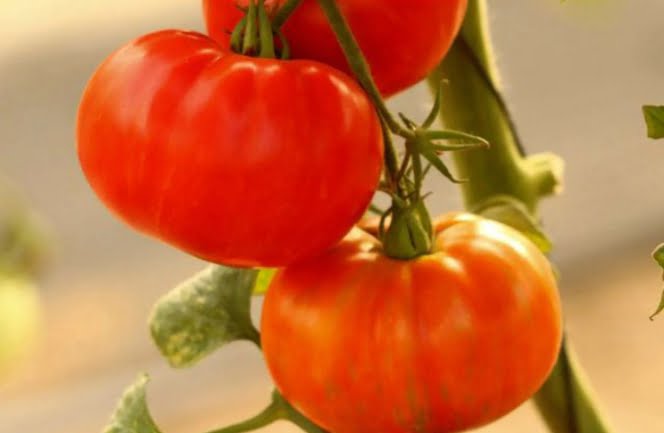
Beefsteak tomatoes have captured the hearts of gardeners and food enthusiasts alike, thanks to their rich flavor and meaty texture. What’s even more enticing is the possibility of cultivating these flavorful gems right in the confines of a pot. This approach opens the door to how to grow beefsteak tomatoes in a pot especially for those with limited space.
However, success isn’t guaranteed without the right techniques. While growing beefsteak tomatoes in pots offers convenience, it requires a specific set of practices to ensure thriving plants and a hearty harvest. In this guide, we’ll explore every aspect, from pot selection to pest management, equipping you with the knowledge to nurture your own crop of delectable beefsteak tomatoes.
This post may have affiliate links. This means that sometimes when you click a link on our site and make a purchase on Amazon, we may earn a small commission at no additional cost to you. We only recommend products we truly believe in, and your support helps keep us running!
Table of Contents
Comprehensive Guide: How to Grow Beefsteak Tomatoes In A Pot
Selecting the Perfect Pot
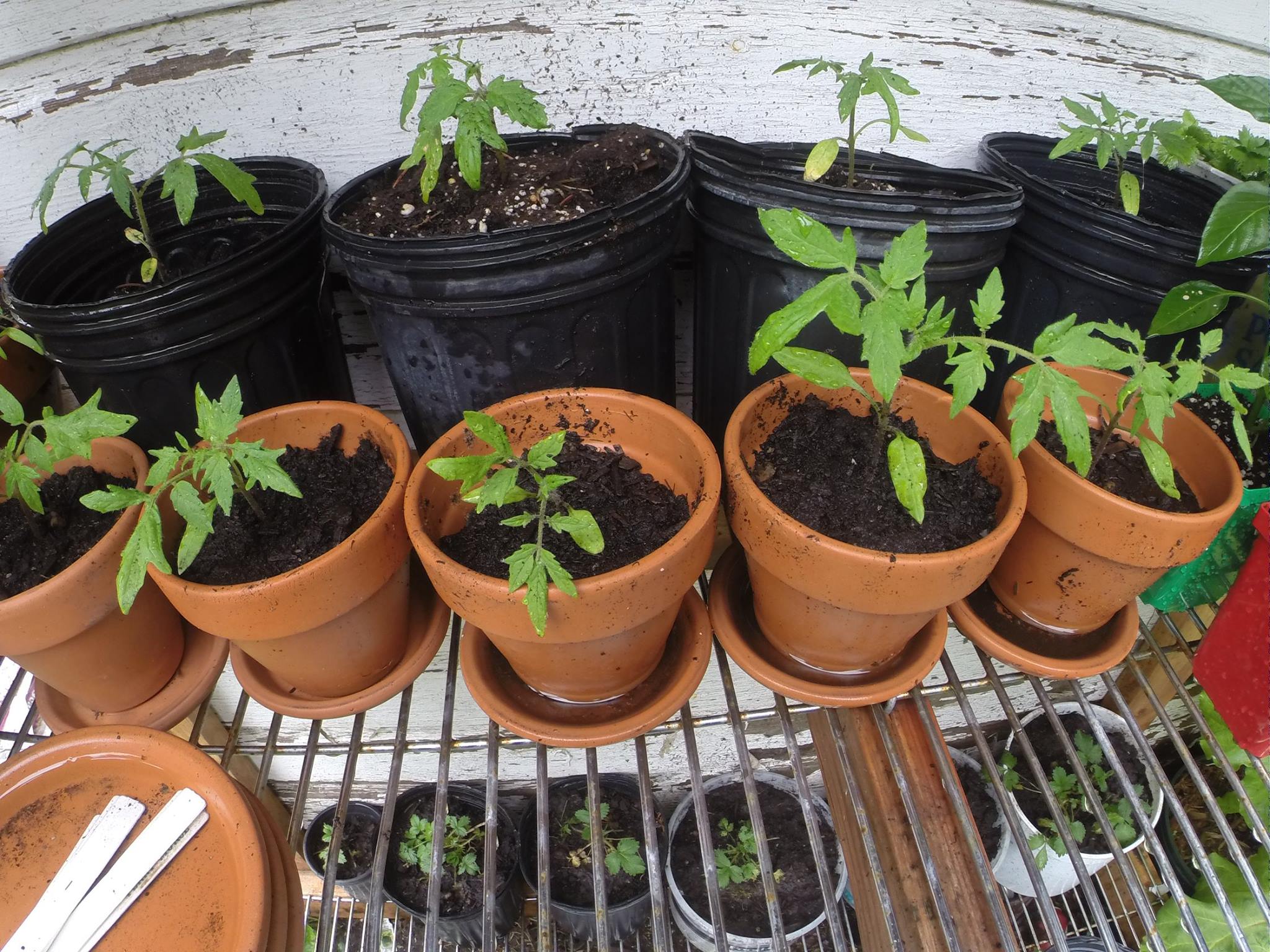
To embark on your journey of growing beefsteak tomatoes, the first step is selecting the ideal pot. This seemingly simple decision plays a crucial role in the success of your tomato plants. Here’s what you need to consider:
Understanding Pot Size Requirements
Beefsteak tomatoes are known for their robust growth and substantial yield. To accommodate their needs, opt for pots with ample space. A pot with a capacity of at least 5 gallons or more is recommended, allowing the roots to spread comfortably and promoting healthy development.
Exploring Different Pot Types
When it comes to pot materials, you have a variety of options to choose from, each with its own set of advantages and drawbacks.
Plastic Pots
Plastic pots are lightweight and easy to move around, making them a practical choice for gardeners who may need to adjust their tomato plants’ location as sunlight patterns change. However, they might not insulate the soil as effectively as other materials.
Clay Pots
Clay pots are known for their breathability, allowing excess moisture to evaporate and preventing waterlogged soil. They also add a touch of aesthetic charm to your garden. On the downside, they can become heavy and may crack in extreme temperatures.
Fabric Pots
Fabric pots promote excellent drainage and air circulation, preventing root rot and promoting robust root systems. They’re also lightweight and can be folded for easy storage. However, they may dry out more quickly and require vigilant watering.
Discussing Drainage and Water Retention
Proper drainage is non-negotiable when it comes to growing beefsteak tomatoes in pots. Without it, excess water can lead to root rot and other issues. Ensure your chosen pot has drainage holes at the bottom to allow water to escape freely.
However, good drainage doesn’t mean neglecting water retention. Incorporate high-quality, well-draining potting mix that retains moisture while preventing waterlogged soil. This balance is essential to keep your beefsteak tomatoes thriving and productive.
Choosing the Right Soil
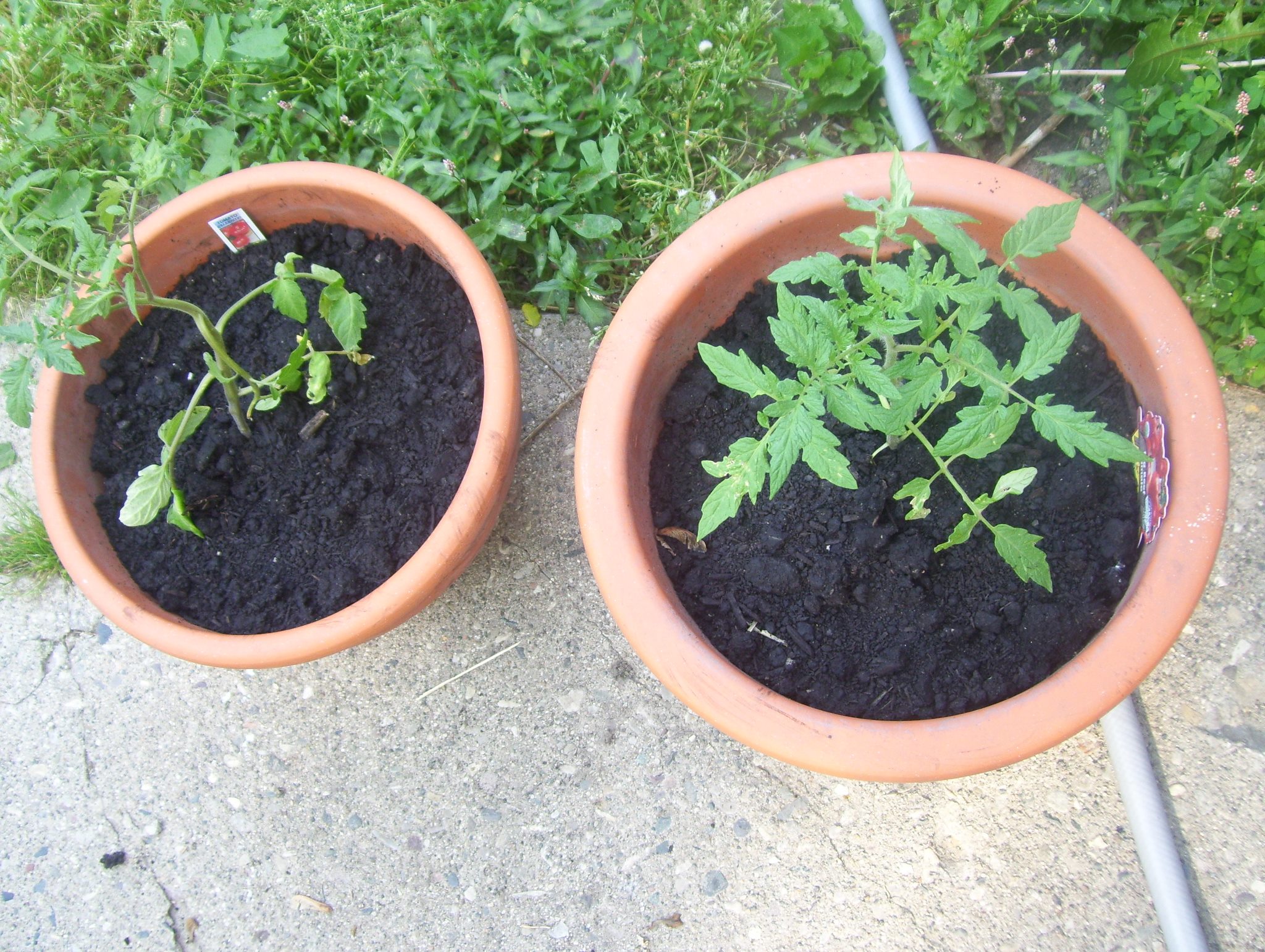
The foundation for healthy beefsteak tomatoes lies in the soil you choose. Here’s how to create an optimal environment for your plants:
Emphasizing Well-Draining, Nutrient-Rich Soil
Well-draining soil is paramount for the success of your beefsteak tomatoes. It prevents waterlogging, which can lead to root rot. Additionally, nutrient-rich soil provides the sustenance your plants need for vigorous growth and bountiful harvests.
Exploring Suitable Soil Mixtures
Container gardening calls for a specialized soil mixture that ensures proper aeration, moisture retention, and nutrient availability. Consider the following mix:
Potting Soil
Start with a high-quality potting soil as the base. This provides a balanced texture and structure that supports root growth.
Compost
Incorporate compost to enhance soil fertility. Compost introduces valuable nutrients and improves the soil’s overall structure.
Perlite or Vermiculite
These additives enhance drainage and aeration, preventing the soil from becoming compacted and allowing roots to breathe.
Organic Matter
The addition of organic matter like well-rotted manure or coconut coir further improves moisture retention and soil structure.
Benefits of Organic Matter
Adding compost, perlite, and other organic matter offers several benefits:
- Improved Drainage: Perlite and organic matter prevent soil compaction, ensuring excess water can escape easily.
- Nutrient Enrichment: Organic matter and compost release nutrients gradually, providing a consistent supply to your plants.
- Moisture Retention: Organic matter helps the soil retain moisture without becoming waterlogged, ensuring your tomatoes have a steady water supply.
Optimal Location and Sunlight
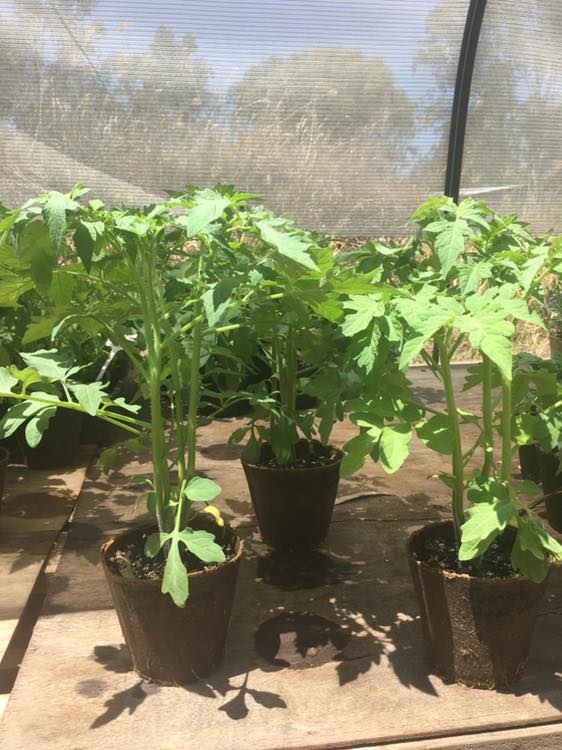
The success of your beefsteak tomatoes hinges on providing them with the right amount of sunlight in the optimal location. Here’s how to create the perfect sunny haven for your plants:
Identifying the Ideal Location
Choose a location that receives ample sunlight throughout the day. Beefsteak tomatoes thrive in full sun, which typically means they need at least 6-8 hours of direct sunlight daily.
Understanding Sunlight Needs
Sunlight is the energy source that fuels photosynthesis, enabling your beefsteak tomatoes to produce the sugars they need to grow and flourish. Inadequate sunlight can lead to weak plants, reduced flowering, and smaller fruit.
Maximizing Sunlight Exposure
To ensure your tomatoes soak up the sun effectively, consider the following strategies:
Proper Placement
Place your tomato pots in an area that receives the most sunlight during the day. This could be a south-facing balcony, patio, or garden spot.
Sunlight Rotation
If you can’t provide all-day sun exposure, consider rotating your pots every few days. This ensures all sides of the plant receive an adequate amount of sunlight over time.
Reflective Surfaces
Positioning your pots near reflective surfaces, such as light-colored walls or fences, can help bounce additional sunlight onto the plants.
Benefits of Adequate Sunlight
Adequate sunlight offers numerous benefits to your beefsteak tomatoes:
- Healthy Growth: Sunlight promotes robust growth, leading to sturdy stems and lush foliage.
- Flower Production: Ample sunlight encourages abundant flowering, translating to more fruit production.
- Enhanced Flavor: Sun-ripened tomatoes tend to have better flavor and nutritional content.
Planting and Caring for Beefsteak Tomatoes In Pots

Once you’ve set the stage with the right pot and soil, it’s time to dive into the hands-on aspects of planting and caring for your beefsteak tomatoes. Here’s a comprehensive guide to ensure their healthy growth:
Step-by-Step Planting Guide
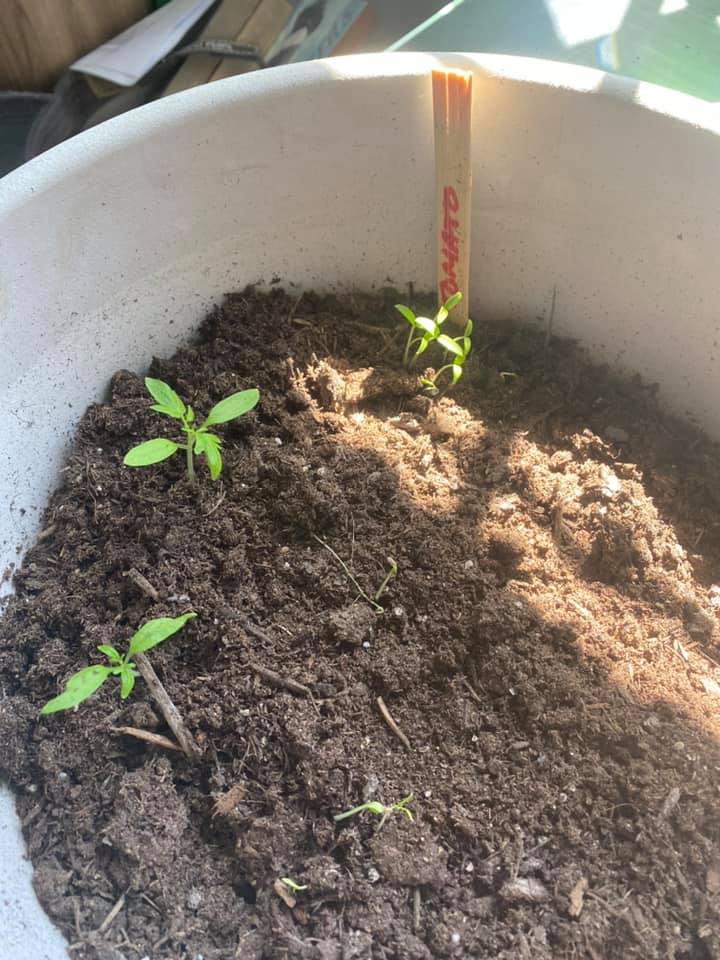
Follow these steps to plant tomato seeds or seedlings in your pot:
- Prepare the Pot: Fill your pot with the well-prepared soil mixture, leaving about an inch below the rim.
- Planting Depth: For seedlings, plant them at the same depth as they were in their original container. If planting seeds, follow the packet instructions for the appropriate depth.
- Spacing: Leave enough space between plants to prevent overcrowding. Beefsteak tomatoes generally need around 2 feet of space between plants.
- Watering: Water the soil well before planting to settle it. Gently transplant the seedling or sow the seeds.
- Water Again: After planting, give your tomatoes a thorough watering.
Watering Guidelines
Proper watering is crucial for tomato health:
- Consistency: Water consistently, keeping the soil evenly moist but not waterlogged.
- Avoid Overhead Watering: Water at the base of the plant to prevent wetting the foliage, which can lead to diseases.
- Check Moisture Levels: Stick your finger into the soil about an inch deep. If it feels dry, it’s time to water.
Pruning Techniques
Pruning encourages healthier growth and higher yield:
- Remove Suckers: Suckers are shoots that grow in the leaf axils. Pinch them off to direct energy toward fruit production.
- Lower Leaves: As the plant grows, remove lower leaves that touch the soil to prevent diseases.
Fertilizing Schedules and Nutrient Requirements
Feeding your beefsteak tomatoes appropriately ensures vigorous growth:
- Balanced Fertilizer: Use a balanced, slow-release fertilizer high in potassium and phosphorus.
- Initial Feeding: Apply fertilizer when you transplant seedlings or see the first true leaves on plants grown from seeds.
- Follow Package Instructions: Follow the instructions on the fertilizer package for the right amount and frequency of application.
Staking and Supporting Beefsteak Tomatoes In Pots

As your beefsteak tomato plants grow and flourish, providing the right support becomes paramount. Staking not only prevents sprawling and damage but also promotes healthier plants and better yields. Here’s your guide to ensuring your tomato plants stand tall:
Understanding the Importance of Support
Beefsteak tomato plants can become heavy with fruit, making them prone to bending, breaking, or touching the ground. Proper support prevents these issues and ensures good air circulation, reducing the risk of diseases.
Exploring Staking Methods
There are various staking methods to choose from, each with its own benefits:
Cages
Cages are convenient and easy to use. They support the plant from all sides and allow tomatoes to grow within the structure, reducing the need for constant tying and training.
Trellises
Trellises provide vertical support and encourage tomatoes to grow upwards. They’re great for maximizing space and sunlight exposure in smaller gardens.
Stakes
Stakes are simple and versatile. They involve tying the tomato plant to a single sturdy stake, providing vertical support.
Tying and Securing Tomato Plants
Securing your tomato plants to their supports is crucial:
- Tying Material: Use soft, flexible ties such as garden twine, fabric strips, or plant-specific ties. Avoid using materials that can cut into stems.
- Loose Ties: Tie your tomato plant gently to the support structure. Make sure the ties are secure but not too tight, as this can damage the stems.
- Regular Checks: As the plant grows, adjust the ties to accommodate its growth without constricting it.
Benefits of Proper Support
Properly supported tomato plants offer a host of benefits:
- Healthy Growth: Support encourages vertical growth, which maximizes air circulation and sunlight exposure.
- Reduced Disease Risk: Properly spaced and supported plants are less likely to develop fungal diseases due to improved air circulation.
- Easy Harvesting: Well-supported plants make it easier to spot and harvest ripe tomatoes.
Managing Pests and Diseases
Maintaining the health of your beefsteak tomato plants involves being vigilant against potential pests and diseases. Here’s how to protect your plants and ensure a thriving harvest:
Identifying Common Pests and Diseases
Be aware of these potential threats to your beefsteak tomatoes:
Common Pests:
- Aphids: Tiny insects that suck sap from leaves, causing them to curl and distort.
- Whiteflies: Small, white insects that cluster on the undersides of leaves, sucking sap and transmitting diseases.
- Hornworms: Large caterpillars that can devour leaves and fruit rapidly.
- Spider Mites: Tiny arachnids that feed on plant juices, causing yellowing and stippling of leaves.
Common Diseases:
- Early Blight: Fungal disease causing dark spots on leaves, weakening the plant.
- Late Blight: Fungal disease causing dark lesions with a water-soaked appearance, often spreading quickly.
- Blossom End Rot: A physiological disorder causing dark, sunken spots on the bottoms of fruit due to calcium deficiency.
- Fusarium and Verticillium Wilts: Fungal diseases that result in wilting, yellowing, and eventual death of the plant.
Natural and Chemical-Free Pest Control
Consider these eco-friendly methods to combat pests:
- Handpicking: Physically removing pests like hornworms and caterpillars can be effective for smaller infestations.
- Beneficial Insects: Introduce predators like ladybugs and lacewings, which feed on aphids and other pests.
- Neem Oil: A natural insecticide that disrupts pests’ growth and development.
Techniques for Early Detection and Prevention of Diseases
Prevention is key to managing diseases:
- Sanitation: Remove and destroy any affected plant parts promptly to prevent disease spread.
- Spacing: Provide adequate spacing between plants to improve air circulation and reduce disease risk.
- Mulching: Apply mulch to prevent soil-borne diseases from splashing onto leaves during watering.
- Watering Practices: Avoid overhead watering to prevent fungal spores from spreading.
Harvesting and Enjoying the Fruits
The moment of reward finally arrives as your beefsteak tomatoes ripen on the vine. Here’s how to savor the fruits of your labor:
Indicators of Ripe Beefsteak Tomatoes

Knowing when your tomatoes are ready to be picked is crucial for optimal flavor and texture:
- Color Change: Beefsteak tomatoes transition from green to a deep, vibrant color. The shade depends on the specific variety.
- Firmness: Gently squeeze the tomato; it should yield slightly under pressure but still feel firm.
- Easy Detachment: Ripe tomatoes should easily detach from the stem with a gentle twist or tug.
Proper Harvesting Techniques
Harvesting with care prevents damage and ensures the best quality:
- Use Pruning Shears: Use clean pruning shears to snip the stem rather than pulling or twisting the tomato off the plant.
- Leave Calyx Attached: Keep the green calyx (the part where the stem is attached) intact; it helps extend shelf life.
- Handle with Care: Handle tomatoes gently to avoid bruising or puncturing the skin.
Tips for Storing and Using Fresh Homegrown Tomatoes
Making the most of your homegrown tomatoes involves proper storage and creative culinary endeavors:
- Storage: Store ripe tomatoes at room temperature, away from direct sunlight. Avoid refrigerating them, as it can affect flavor and texture.
- Preservation: If you have an abundance of tomatoes, consider making sauces, salsas, or even sun-dried tomatoes for future use.
- Culinary Delights: Incorporate your homegrown tomatoes into salads, sandwiches, pasta dishes, and more for an explosion of flavor.
- Freezing: If you can’t use all your tomatoes, you can freeze them for later use. Blanch, peel, and store them in freezer-safe containers.
Benefits of Homegrown Enjoyment
The satisfaction of enjoying your own homegrown beefsteak tomatoes is unparalleled:
- Superior Flavor: Homegrown tomatoes boast a richness of flavor that store-bought varieties often lack.
- Nutritional Value: Freshly harvested tomatoes are packed with vitamins, minerals, and antioxidants.
- Sustainable Living: Growing your own produce contributes to a sustainable lifestyle by reducing reliance on store-bought goods.
